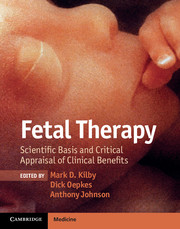
- Cited by 2
-
Cited byCrossref Citations
This Book has been cited by the following publications. This list is generated based on data provided by Crossref.
Zaami, Simona Masselli, Gabriele Brunelli, Roberto Taschini, Giulia Caprasecca, Stefano and Marinelli, Enrico 2021. Twin-to-Twin Transfusion Syndrome: Diagnostic Imaging and Its Role in Staving Off Malpractice Charges and Litigation. Diagnostics, Vol. 11, Issue. 3, p. 445.
Patil, Shreya 2025. Artificial Womb Technology: Advancements, Challenges, and Ethical Considerations. International Journal of Innovative Science and Research Technology, p. 2144.
- Publisher:
- Cambridge University Press
- Online publication date:
- February 2013
- Print publication year:
- 2012
- Online ISBN:
- 9780511997778


